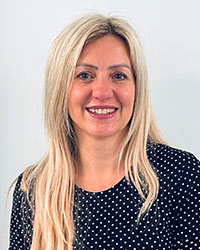Total IgE
Immunology
Description
IgE is an immunoglobulin molecule that binds to mast cells and basophils. The binding of antigen (allergen) to membrane bound specific IgE will cause degranulation and release of mediators such as histamine and tryptase [1,2]. Serum concentration of IgE is significantly elevated in patients suffering from extrinsic asthma, hay fever or atopic eczema. The increase during childhood is slow, Adult values are not stabilized until 15-20 years of age [1]. Raised levels can also be seen in patients with parasitic disease, Wiskott-Aldrich syndrome and hyper-IgE syndrome. Hyper-IgE syndrome is a rare immunodeficiency characterized by recurrent skin and pulmonary abscesses and extremely elevated levels of IgE in serum. The syndrome also affects the teeth, skeleton and connective tissue of the sufferer [3]. IgE myeloma is a very rare condition.
Indications
Hyper lgE syndrome / Atopic eczema / Wiscott-Aldrich syndrome / Allergic bronchopulmonary aspergillosis / lymphoma and parasitic infections.
Sample Type
2mL Serum (Gel 5mL Yellow tube). Requests from outside Sheffield: Transport at ambient temperature via Royal Mail or Courier.
Reference Range
Age | Normal range (KU/L)Newborn - 3 Months | <53 months - 1 year | <111 year - 5 years | <295 years - 10 years | <5210 years - 15 years | <6315 years - Adult | <75Adult * | <81* Adult values are not stabilized until 15-20 years of ageReference ranges established in house and PRU collaboration.
Turnaround Time
Within 5days
Testing Frequency
Daily
External Notes
A definitive clinical diagnosis should not be based on the results of any single diagnostic method, but should only be made by the physician after all clinical and laboratory findings have been evaluated.
References
PRU Handbook of clinical immunology. 9th Edition. 2007. [Ref 1]Prussin C and Metcalf D. IgE, mast cells, basophils and eosinophils. J Allergy Clin Immunol. 2006. 117(2):S450-S456. [Ref 2]Grimbacher B, et al. Hyper-IgE syndrome with recurrent infections - an autosomal dominant multisystem disorder. N Eng J Med. 1999. 340(9):692-702. [Ref 3]Macro M, et al. IgE multiple myeloma. Leuk Lymphoma. 1999. 32(5-6):597-603. [Ref 4]
Please note: the above information is subject to change and we endeavour to keep this website up to date wherever necessary.
Your contact for this test

Clare Del-Duca BSc (Hons) Biomedical Science, MSc Pathological Science
Laboratory Manager - Immunology and Protein Reference Unit
You are enquiring about
Total IgE